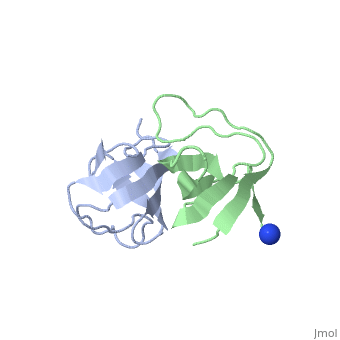Ras GTPase activating protein
FunctionRas GTPase activating protein (RasGAP) inactivates Ras from its active GTP-bound form to its GDP-bound form[1]. It is part of the mitogenic signal transmission via its N-terminal SH2-SH3-SH2 domains. SynGAP is a neuronal RasGAP expressed in brain and negatively regulates Ras activity and its signaling pathways[2]. RelevanceInactivated RasGAP activate RAS which is mutated in 30% of cancer types[3]. RasGAP Colra1 is involved in infection-related morphogenesis in gourd family plants[4].
|
| ||||||||||
3D Structures of Ras GTPase activating protein3D Structures of Ras GTPase activating protein
Updated on 04-August-2024
ReferencesReferences
- ↑ Tocque B, Delumeau I, Parker F, Maurier F, Multon MC, Schweighoffer F. Ras-GTPase activating protein (GAP): a putative effector for Ras. Cell Signal. 1997 Feb;9(2):153-8. PMID:9113414
- ↑ Kim JH, Lee HK, Takamiya K, Huganir RL. The role of synaptic GTPase-activating protein in neuronal development and synaptic plasticity. J Neurosci. 2003 Feb 15;23(4):1119-24. PMID:12598599 doi:10.1523/JNEUROSCI.23-04-01119.2003
- ↑ Maertens O, Cichowski K. An expanding role for RAS GTPase activating proteins (RAS GAPs) in cancer. Adv Biol Regul. 2014 May;55:1-14. doi: 10.1016/j.jbior.2014.04.002. Epub 2014 Apr, 30. PMID:24814062 doi:http://dx.doi.org/10.1016/j.jbior.2014.04.002
- ↑ Harata K, Kubo Y. Ras GTPase activating protein CoIra1 is involved in infection-related morphogenesis by regulating cAMP and MAPK signaling pathways through CoRas2 in Colletotrichum orbiculare. PLoS One. 2014 Oct 2;9(9):e109045. doi: 10.1371/journal.pone.0109045. eCollection, 2014. PMID:25275394 doi:http://dx.doi.org/10.1371/journal.pone.0109045
